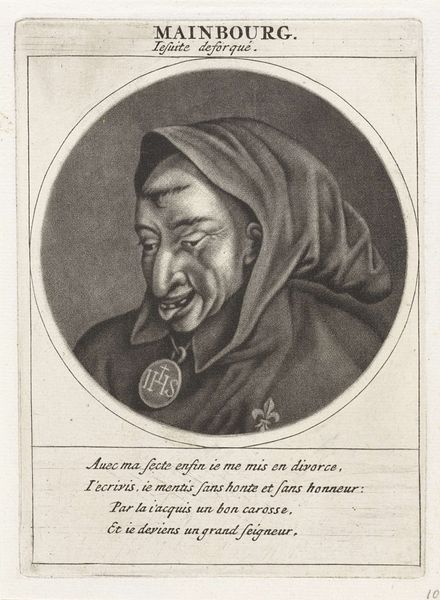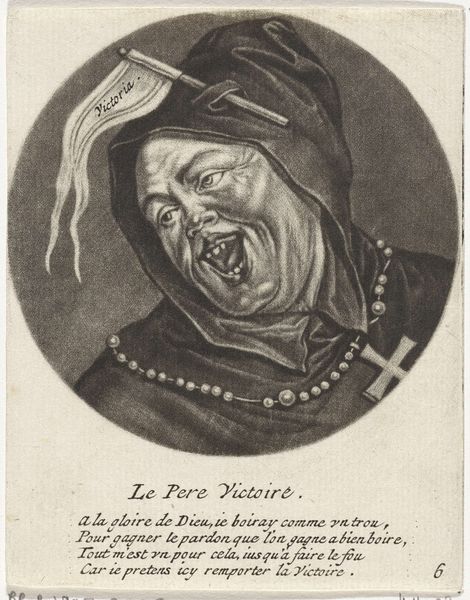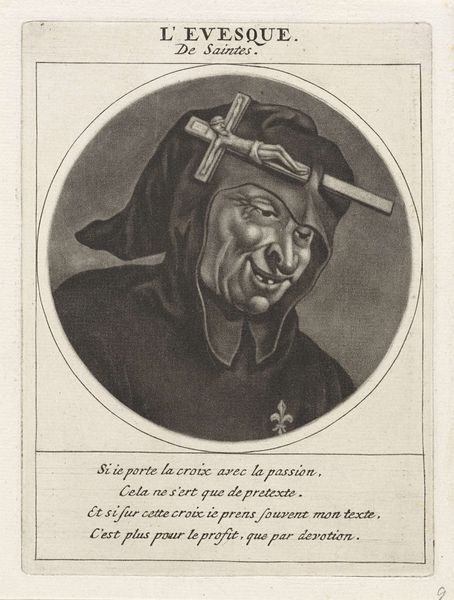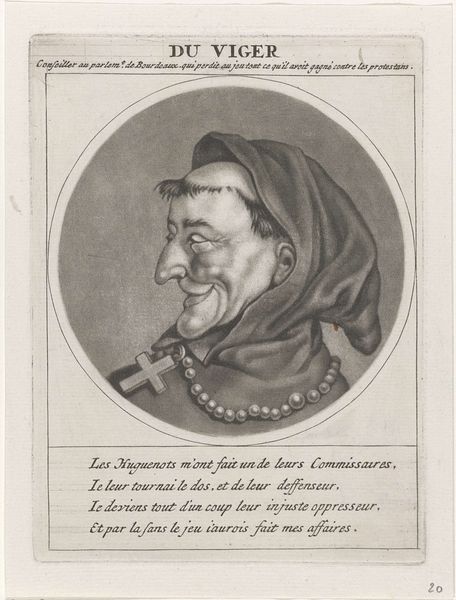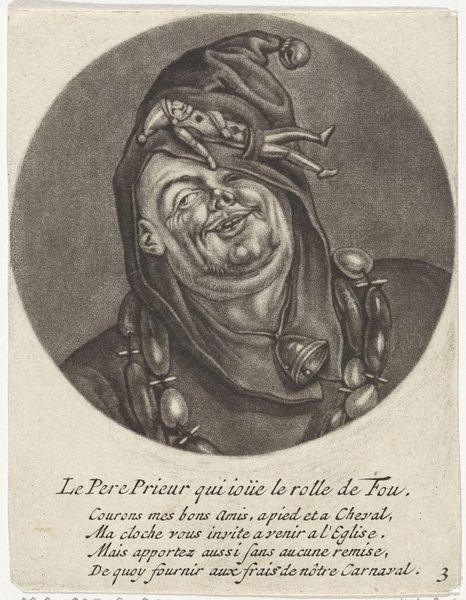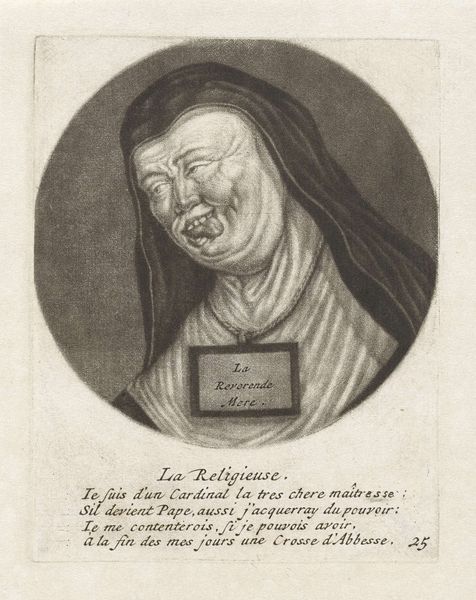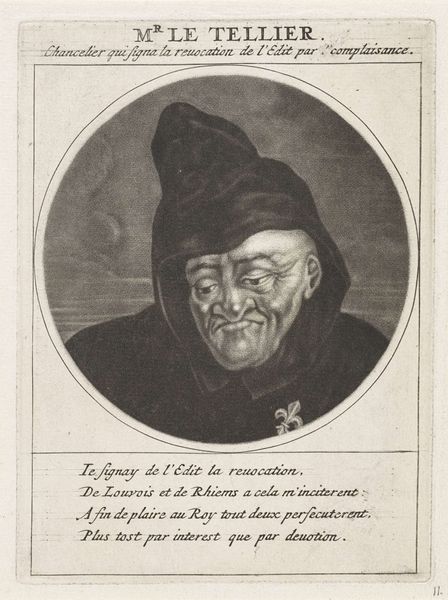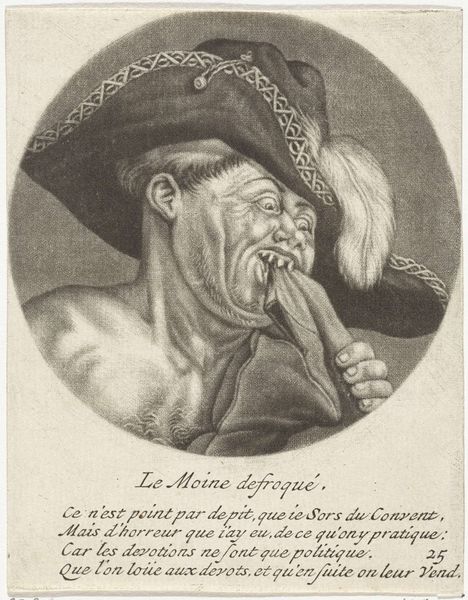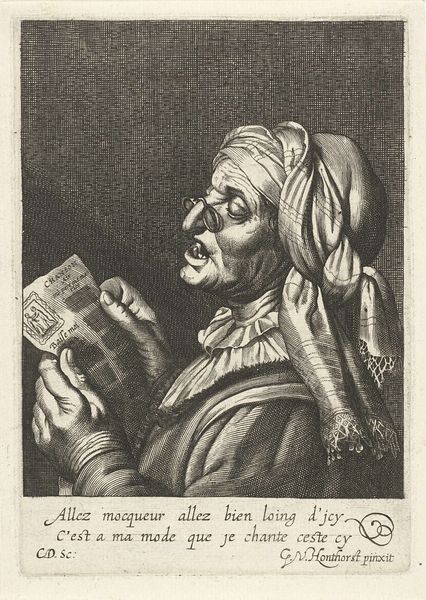
print, engraving
#
portrait
#
baroque
# print
#
caricature
#
figuration
#
engraving
Dimensions: height 115 mm, width 90 mm
Copyright: Rijks Museum: Open Domain
Curator: So, here we have “Luiheid,” or “Laziness,” an engraving by Jacob Gole, dating from possibly 1670 to 1724. It’s held at the Rijksmuseum. Editor: It's striking, in a grotesque way. I'm particularly drawn to the figure's exaggerated features and the sort of cynical humour. What's your interpretation of the work? Curator: I see this engraving as a commentary on social values and perhaps even a critique of power structures of the time. Look at how laziness is personified, not as some neutral state, but as an almost monstrous figure weighed down by their own…inertia. Editor: He almost seems monastic, but with the bell, clochette, attached to his head? And isn’t “Le Frere Morphée,” written on the tag? Curator: Precisely. This interplay suggests a critique of the clergy perhaps, hinting at hypocrisy or a life of ease within the church. And what does it mean to name this figure after Morpheus, the god of dreams? What kind of dream state does absolute laziness allow? Who profits from it, who is hurt by it? Editor: I guess I was mostly reacting to it aesthetically. I hadn’t really thought about it as a commentary. Curator: Well, art doesn't exist in a vacuum. This piece can serve as a lens through which we understand social attitudes towards work, class, and even moral responsibility in 17th- and 18th-century society, which perhaps can resonate even today. Editor: Thanks, I'll certainly view works differently now, understanding their place in a historical conversation. Curator: And I am grateful for the reminder that humour is itself a kind of social commentary!
Comments
No comments
Be the first to comment and join the conversation on the ultimate creative platform.
